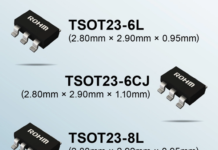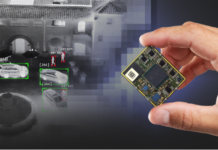
Mouser Electronics is now stocking the DS28E39 and DS28E84 DeepCover authenticators from Maxim Integrated. The secure authenticators enable engineers to add an extra layer of protection to applications such as Internet of Things (IoT) nodes, device management, secure peripherals, and medical sensors.
The Maxim DS28E39 and DS28E84 DeepCover authenticators, help design engineers safeguard medical devices against invasive attacks. The devices provide a core set of cryptographic tools derived from integrated blocks, including an asymmetric ECC-P256 hardware engine (plus a symmetric SHA-256 compute engine in the DS28E84), a FIPS-compliant (FIPS/NIST-compliant for the DS28E39) true random number generator, and a decrement-only counter. The devices also include onboard nonvolatile memory (2 Kbits of secured EEPROM on the DS28E39, and 15 Kbits of FRAM on the DS28E84) and offer a unique 64-bit ROM identification number, which is used as a fundamental input parameter for cryptographic operations and serves as an electronic serial number within the application.
Designed to protect devices against security attacks, the DS28E39 is an Elliptic Curve Digital Signature Algorithm (ECDSA) public key-based secure authenticator that incorporates Maxim’s patented ChipDNA physically unclonable function (PUF) technology. Attempts to probe or observe ChipDNA operation modifies the underlying circuit characteristics, preventing discovery of the unique value used by the chip cryptographic functions.
The DS28E84 is a radiation-resistant secure authenticator designed for medical devices. High radiation exposure used in sterilization processes can disrupt and damage the standard nonvolatile memory (NVM) that electronic medical devices use for auto identification, as well as calibration and manufacturing data. The DS28E84 IC’s high radiation resistance up to 50 kilograys allows user-programmable manufacturing or calibration data before medical sterilization, protecting against unauthorized reuse and enhancing patient safety.
Both the DS28E39 and DS28E84 communicate over the single-contact 1-Wire bus at both standard and overdrive speeds, allowing for simple integration into designs. The communication follows the 1-Wire protocol with the ROM ID acting as node address in the case of a multi-device 1-Wire network.
To learn more about the DS28E39 authenticator with ChipDNA tehcnology, visit www.mouser.com/maxim-ds28e39-authenticator.



















